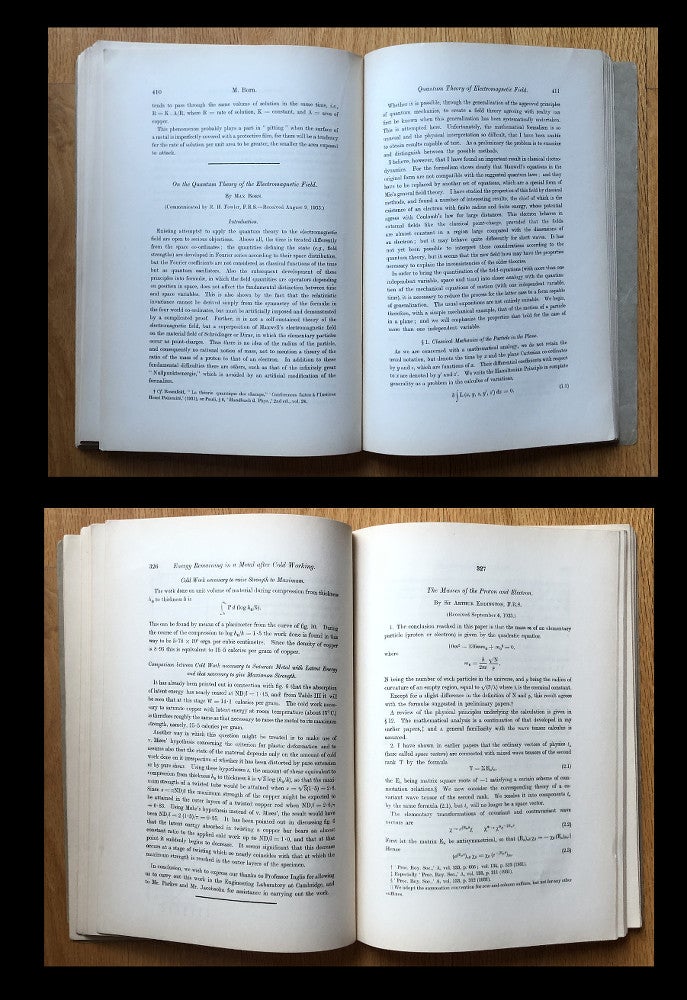On the Quantum Theory of the Electromagnetic Field (Born, pp. 410-438) WITH The Masses of the Proton and Electron (Eddington, pp. 327-350) in Proceedings of the Royal Society of London 143, January 1, 1934
London: Royal Society, 1934. 1st Edition. Original paper wrappers. First edition of significant works by two important scientists, Max Born & Arthur Eddington.
BORN: “Born’s quest for the elusive divergence problem-free quantum theory of electromagnetism led to the important discovery of the nonlinear Maxwell–Born– Infeld equations for the classical electromagnetic fields, the sources of which are classical point charges in motion” (Kiessling, Electromagnetic Field Theory, 1). Born surmised that the infinite self-energy problems that plague QED could be eliminated by quantizing nonlinear classical electromagnetic field equations which assign point charges a finite (classical) self-energy” (Kiessling, Electromagnetic Field Theory, 1). In 1933, Max Born was “particularly concerned with establishing a ‘gauge invariant theory’ which solutions would be independent of electromagnetic potential and thus compatible with the requirements of quantum theory” (Enn, Nonlinear Phenomena in Physics, 1.18). In that year he argued that the static Maxwell–Born–Infeld equations with a single point charge as source could be solved explicitly, and in this paper, he elaborates on that work and formulates “a non-linear theory of the electromagnetic field which satisfies all the postulates of relativity theory” (Birula, Quantum Electrodynamic, 87). Born would go on to win the 1934 Nobel Prize in Physics.
EDDINGTON: Arthur Eddington was an English astronomer, physicist, and mathematician who believed that the laws of physics were subjective. What seemed to upset his colleagues even more than that, was that he suggested that assigned values “could be calculated without doing any experiments at all, just by considering the type of input and the method of calculation – in a word, epistemologically” (ibid).
Keeping to his philosophy, in this paper, Eddington presents a calculation of the proton-electron mass ratio. “This, according to him, was the ratio of the roots of a very straightforward quadratic equation obtained by considering the nature of the experimental measurements and their application – but without actually doing the experiment” (F rancis, An Odd Couple). Item #1347
CONDITION & DETAILS: London: Royal Society, 1934. Individual issue in original printed wrappers. 4to. (10 x 7 inches). Small chips at the head and foot of the spine and a chip out of the lower corner of the front wrap. Internally lightly toned, clean with no marks whatsoever.
Price: $600.00

